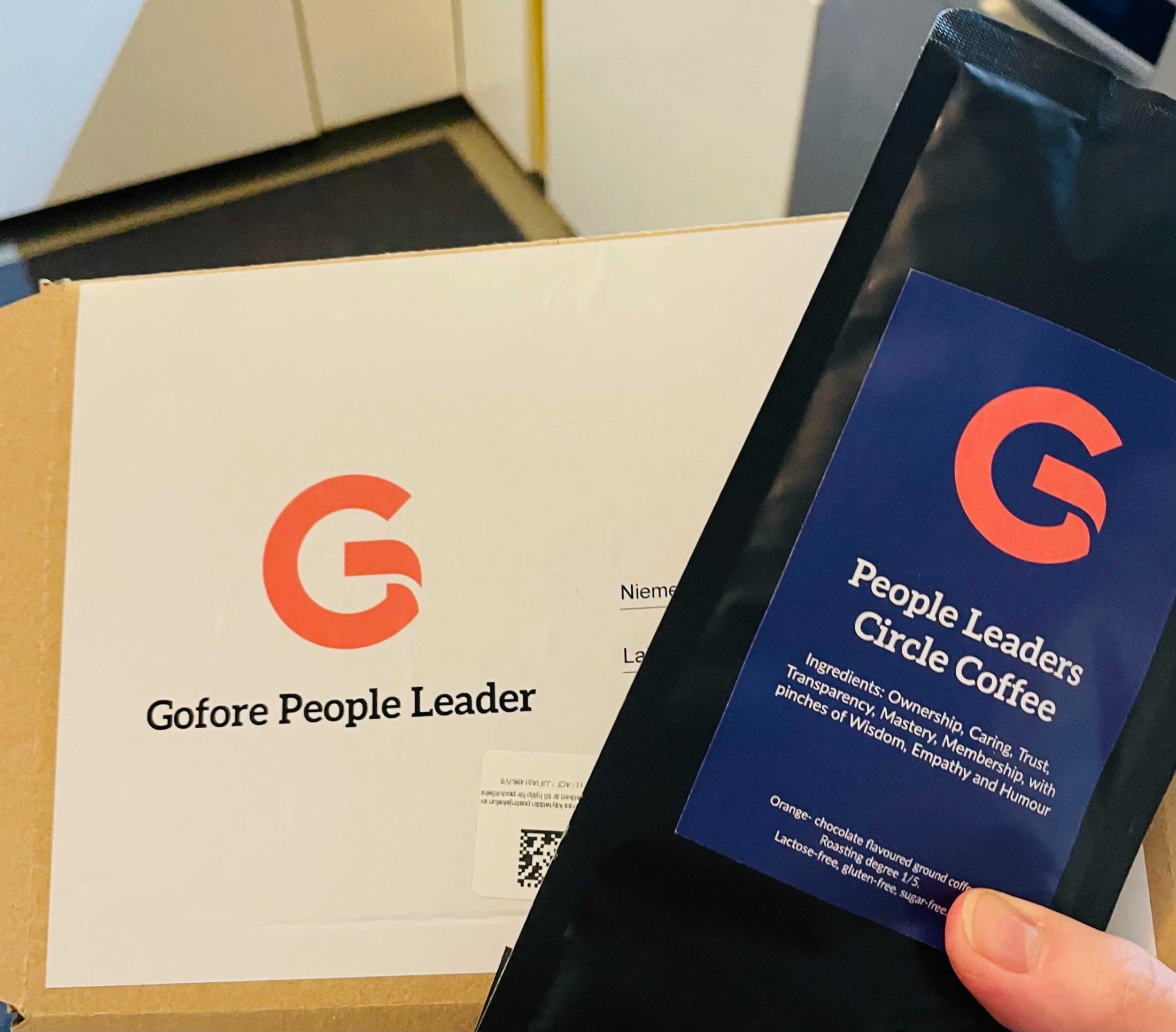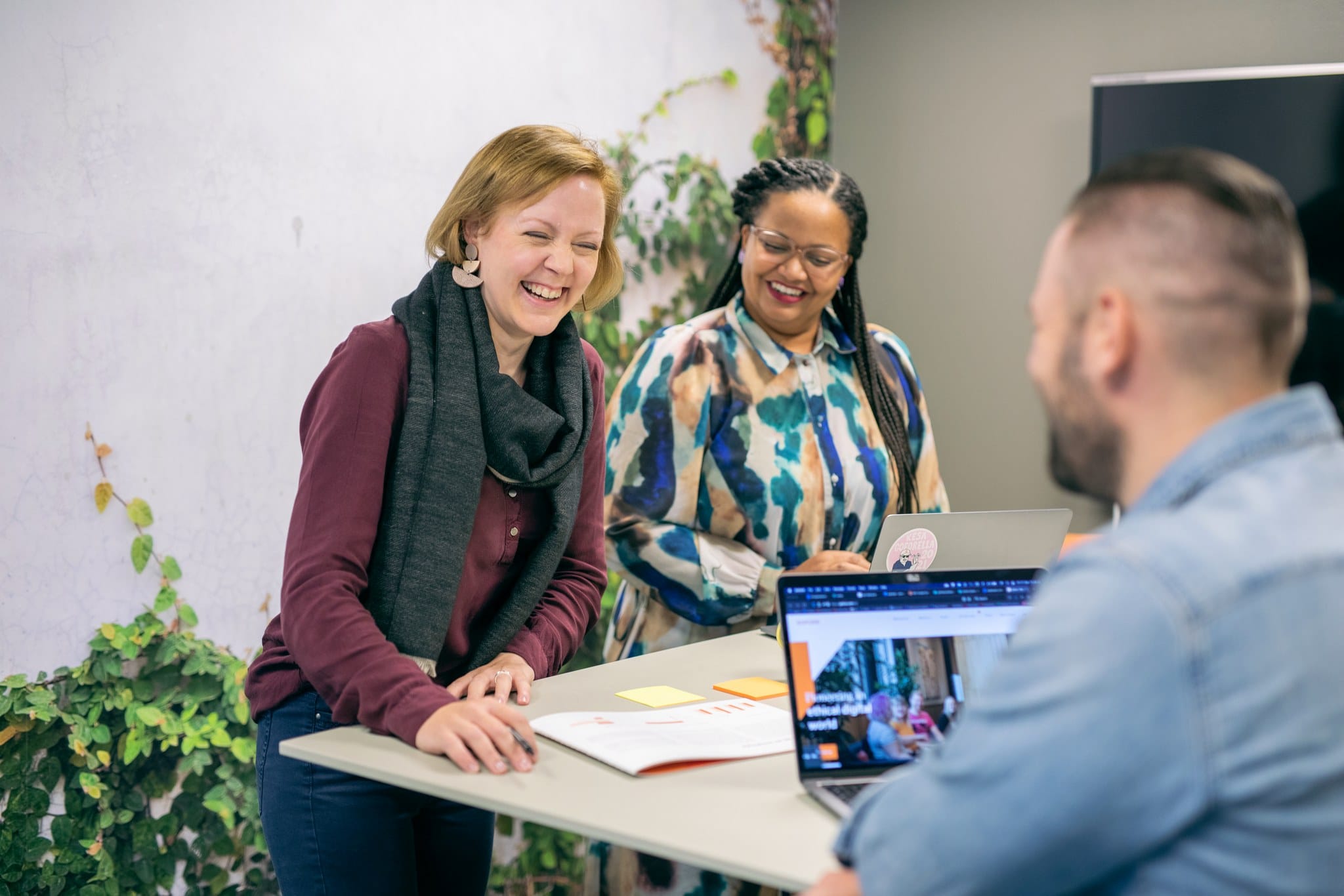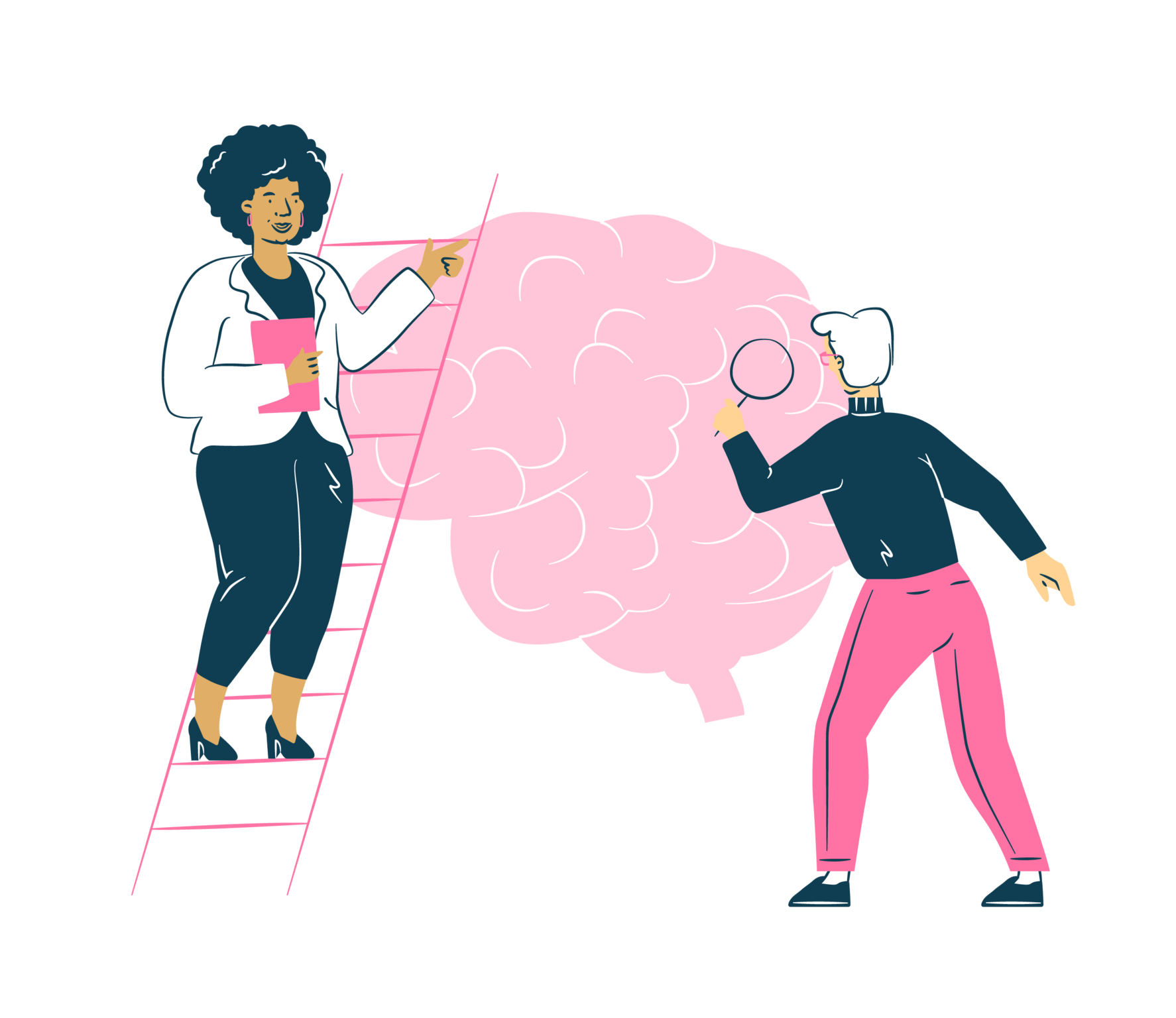People Leaderin (joita me Goforella kutsumme ”henkilöstöjohtajiksemme”) rooli on yksi vaativimmista rooleista, joita on olemassa. He ovat taikureita, jotka jongleeraavat oman työnsä, tiiminsä työn ja liiketoiminnan tarpeiden välillä. He ovat – joskus stressaantuneita – sankareita, jotka tarjoavat työntekijöillemme jokapäiväisen työntekijäkokemuksen. Ja me kaikki tiedämme henkilökohtaisesta kokemuksesta, millainen vaikutus loistavalla People Leaderilla on. Tunnet, että voit olla oma itsesi. Et pelkää kokeilla jotain uutta, koska tiedät, että sinulla on joku nurkassasi tukemassa sinua. Kun teet virheitä, se ei tunnu maailmanlopulta vaan pikemminkin oppimismahdollisuudelta.
Viime syksynä pyysimme goforelaisia nimeämään minkä tahansa osaamisalueen suurmestareita (”Grand Masters”), ja eräs goforelainen halusi jakaa tämän:
”Hän on yksinkertaisesti paras esimies, People Person, jonka olen tavannut yli 35-vuotisen ICT-urani aikana. Hän on inhimillinen, ystävällinen ja ymmärtäväinen, hän kuuntelee sinua, hän ottaa sinut vakavasti, hän auttaa ja ”potkaisee” sinua menemään sitä tietä, jota haluat kehittääksesi omaa uraasi, hänen tyylinsä on valmentava asenne, mutta hän on myös vaativa, huolellinen ja harkitseva, kun se on tarpeen. – Yksinkertaisesti Paras, todellinen Grand Master Flash!”
Melko hämmästyttävää, eikö? Tuoreen hyvinvointitutkimuksemme perusteella 81,5 % vastaajista kertoi, että heidän People Leaderinsä tukee ja auttaa heitä jokapäiväisessä työssään. Ja lokakuussa 2021 tekemässämme sitoutumiskyselyssä 73 % vastaajista oli samaa mieltä lauseesta ”Esimieheni välittää aidosti hyvinvoinnistani”. Iso hattu päästä! Tällaisistakin tuloksista huolimatta tiedämme, että loistavana People Leaderina toimiminen ei ole helppoa. Ja meidän on yrityksenä varmistettava, että People Leaderimme voivat hyvin ja pysyvät terveinä vaativassa työssään, jossa he tukevat muita. Monet heistä työskentelevät samaan aikaan itse asiakasprojekteissa.
Last year we started developing the next version of our leadership model which, over time, will define the role and expectations for a People Leader. From the people development perspective that means, in addition to defining our leadership principles, also creating structures that support our People Leaders’ well-being. For this we decided to utilise the self-determination theory and people’s basic psychological needs. Therefore, our primary focus has been on the competence, autonomy and the support network of our People Leaders. For competence, we built a series of trainings for people manager skills. For the support network, we started the People Leaders Circle.

Mitä hyötyä koulutuksista on?
Erillisinä tapahtumina ei juurikaan. Kuka tahansa voi mennä internetiin ja löytää sieltä perusvinkkejä ja koulutusohjelmia itsensä kehittämistä varten. Mutta meidän lähestymistapamme perustui kahteen tekijään:
Ensinnäkin: meillä on sekä nuorempia että kokeneita People Leadereitä, ja meidän on löydettävä keino varmistaa kaikkien perustaitojen taso tärkeimmillä alueilla.
Toiseksi: emme tarjoa vain koulutuksia, vaan jokainen koulutus käynnistää virran, joka koostuu pienestä ryhmästä People Leadereitä. Tämä ryhmä jatkaa yhteistyötä aiheen parissa tavoitteenaan luoda yhdessä filosofiamme ja työkalumme kyseistä aluetta varten.
Tähän koulutuskokonaisuuteen valittiin seuraavat aiheet: palaute, vaikeat keskustelut, oppimisen helpottaminen, rekrytointi ja työnantajabrändäys, hyvinvointi, työlainsäädäntö ja Goforen käytännöt sekä Goforen strategia, visio ja johtaminen. Nämä aiheet valittiin, koska niillä on suuri vaikutus työntekijäkokemukseen.
In the trainings, we try to find new approaches to or tools for familiar topics that serve as discussion-starters. There’s also as much hands-on practicing as possible. For example, in the feedback training we didn’t practice giving feedback but wanted to focus on strengthening one of Gofore’s building blocks, namely self-management. This happened by introducing a tool that People Leaders can use when their team members come to them with the feedback they have received, but are not sure of how to utilise it for their own development.
Koulutuksissa pyrimme löytämään uusia lähestymistapoja tai työkaluja tuttuihin aiheisiin, jotka toimivat keskustelun herättäjinä. Koulutuksissa on myös mahdollisimman paljon käytännön harjoittelua. Esimerkiksi palautekoulutuksessa emme harjoitelleet palautteen antamista, vaan halusimme keskittyä vahvistamaan yhtä Goforen rakennuspalikoista, nimittäin itsensä johtamista. Tämä tapahtui esittelemällä työkalu, jota People Leaderit voivat käyttää, kun heidän tiimiläisensä tulevat heidän luokseen saadun palautteen kanssa, mutta eivät ole varmoja siitä, miten hyödyntää sitä omassa kehityksessään.
Seuraavaksi palautevirrassamme keskustellaan siitä, voisiko edellä mainittuja lähestymistapoja hyödyntää osana johtamismalliamme ja miten niitä voitaisiin hyödyntää. Keräämme myös ”Aloita, Lopeta, Jatka ja Vastaamattomat kysymykset” -tyyppistä palautetta Muralista koulutusten jälkeen, mikä antaa hyvää panosta virran työhön. Avoimuuden vuoksi meillä on avoin kanban-taulu ja avoin dokumentaatio, josta kuka tahansa People Leader voi tarkistaa viimeisimmät kehitysaskeleet ja aiheet.
People Leaders Circle – mikä se on?
Circle on sisäinen, koko konsernin kattava tukiverkostomme People Leadereillemme. Se on Slack-kanava ja Teams-alusta. Edellä mainitut koulutukset on suunnattu Circlereille. Se on ryhmä ihmisiä, joilla on suurin vaikutus goforelaisten jokapäiväiseen elämään, joten heidän panoksensa ja hyvinvointinsa on Goforelle suunnattoman tärkeää.
Jo aiemmin meillä on ollut aktiivinen Slack-kanava esimerkiksi Suomen People Leadereille, jossa on keskusteltu ja tarkistettu työsuhteeseen liittyviä asioita. Uutta Circlen kanssa on se, että kyseessä on koko konsernin laajuinen verkosto. Eri maista ja kulttuureista tulevien kollegojen kanssa verkostoitumisessa ja jakamisessa on paljon viisautta, ja sitä haluamme lisätä Circlellä. Lisäksi koko konsernin laajuisten käytäntöjen yhteiskehittäminen edellyttää organisaatiomme kaikkien osien osallistumista, ja Circle tukee ja juhlistaa tätä näkökohtaa.
Kun meillä on noin 100 People Leaderiä, joista useimmat työskentelevät myös päivittäin hankkeissa, on luonnollisesti rajallinen määrä aikaa, jonka he voivat varata Circlen kaltaiseen toimintaan. Sen vuoksi Circle on rakennettu niin, että se toimii enemmänkin apuvälineenä ja resurssina People Leadereille, kun he tarvitsevat tukea tai tietoa. Olemme esimerkiksi luoneet ja päivittäneet joitakin perehdyttämistyökalujamme, jotta heidän työnsä rekrytoinnin ja perehdyttämisen parissa olisi sujuvampaa.
Jotta voisimme ymmärtää paremmin tämän suuren ryhmän tarpeita ja toiveita, tarjoamme myös mahdollisuuden fasilitoituihin pienryhmäkeskusteluihin nimeltä ”My People Leadership”. Näiden keskustelujen tarkoituksena on lähentää Circlerejä toisiinsa, mutta myös keskustella omista kipupisteistä ja toiveista People Leadershipiä ja johtamismalliamme kohtaan. Sadan hengen ryhmässä on vaikea luoda yhteenkuuluvuuden ja jakamisen tunnetta, mutta kahdeksan hengen ryhmässä se on helpompaa.
Joten minne tämä kaikki johtaa?
Totta puhuakseni on ollut hetkiä, jolloin olemme kyseenalaistaneet ” henkilöstöjohtajien” tarpeen, mutta sitten olemme tajunneet, että asiaa ei voi kiertää: on kaikkien edun mukaista, että meillä kaikilla on joku, jonka puoleen kääntyä. Se, että emme vielä tiedä, mihin tämä kaikki johtaa ja miltä johtamismallimme näyttävät tulevaisuudessa, on se, missä olemme juuri nyt.
Sen tiedämme, että haluamme selkeyttää People Leadereidemme roolia ja tarjota heille tukimekanismeja ja työkaluja, jotka auttavat heitä tuntemaan itsensä varmoiksi ja motivoituneiksi työssään. Haluamme korostaa, että tämä on meille kaikille oppimispolku, ja yritämme yhdessä löytää tietämme. Kuten eräässä sisäisessä blogikirjoituksessamme viime vuonna mainittiin: jos huomaat, että oma People Leaderisi testaa uutta lähestymistapaa tai tapaa tehdä asioita, ole sille avoin ja mene virran mukana (ja anna palautetta)! Se on meidän tapamme toimia.
Oletko kiinnostunut Goforesta työnantajana? Vahvuutemme on monimuotoinen joukko eri alojen asiantuntijoita, joille haluamme tarjota parhaat mahdollisuudet kehittyä ja kukoistaa, sekä työssä, että sen ulkopuolella.



